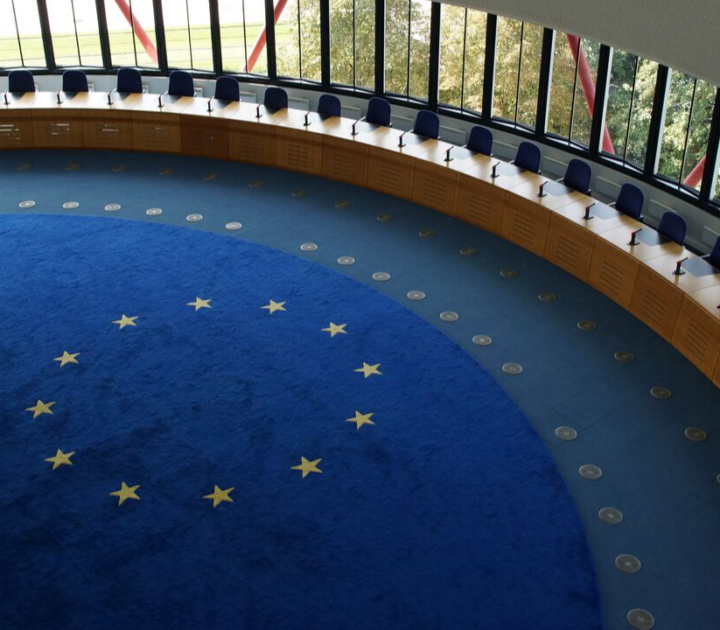
Landmark financial sustainability regulation is finally here. Now what?
Demand for ESG products has boomed in recent years and shows no signs of slowing down. Investors are increasingly moving beyond the simple risk-return paradigm to ask how they can deploy capital that reflects their values and beliefs to create positive impact and serve as a lever for sustainable change. For their part, corporations are also accelerating their disclosure of environmental, social and governance (ESG) factors and how these factors relate to the transformation to sustainable business models.
To meet the significant growth in investor demand, asset managers are creating ESG funds at a rapid pace, up more than 30% from 2019 to 2020. The result is a crowded environment that makes it harder for investors to assess the ESG credentials of funds and the asset managers who stand behind them. Matching investor appetite and regulatory demands with corporate transformation requires transparency and consistency in ESG disclosure practices. Both sides are needed to produce a functioning market.
On this front, the EU Sustainable Finance Disclosure Regulation (SFDR) introduces various disclosure-related requirements for financial market participants and financial advisors across the entity, service and product levels. The new EU rules aim to ensure transparency and comparability for pre-defined ESG metrics within the financial markets while curbing abuses such as greenwashing. As the majority of the disclosure obligations go into effect on 10 March 2021, investors and firms must now become compliant with the new framework.
Key elements of the regulation
The most visible and impactful element of the SFDR regulation is the classification of funds and mandates in three categories, established in Articles 6, 8 and 9 of the SFDR.
Article 6 covers investment funds that do not integrate any kind of sustainability into the investment process and include equities currently excluded by ESG funds (such as tobacco companies or thermal coal producers). Although these funds can continue to be sold in the EU, they will need to be clearly labeled as non-sustainable and they may face considerable marketing difficulties relative to more sustainable funds.
Article 8 applies to financial products that promote among other characteristics, environmental or social characteristics (provided the investee companies follow good governance practices).
Article 9 applies to financial products that have sustainable investment as their objective and includes an additional category for financial products that have a reduction in carbon emissions as an objective.
Asset managers will need to determine whether their projects fall under the scope of either Article 8 or Article 9 at an early stage of project implementation. Large asset managers such as Robeco estimate that most of their funds will be classified as Article 8, with an impact investing product (RobecoSAM) classified under Article 9, while a handful will fall under Article 6. While this distribution is likely similar across larger asset managers, SFDR will have a large effect on the marketing materials and disclosure environment of impact investors – who make investments that tackle specific environmental or social objectives. Some players in this space such as Triodos Investment Management, where all of their funds are compliant with Article 9, are already using it as a strategic advantage.
The practical implications of SFDR require asset managers to update fund prospectuses, website product information and Key Investor Information Documents (KIIDs), along with their due diligence policy. In-depth guidance is available from many market players such as Deloitte, EY and Simmons & Simmons.
Toward an integrated ESG data environment
Behind the scenes, SFDR will completely change the disclosure landscape of publicly listed companies and other firms. To this end, it is important to first understand the ESG data ecosystem. Incorporating ESG information into the investment process relies on companies to first report their ESG data. Here, the SFDR will implement a system of 50 adverse impact indicators, of which 32 will be mandatory to report, and 18 will be voluntary. The compulsory factors range from carbon emissions, fossil fuel exposure and waste levels (E) to gender diversity and due diligence over human rights (S) and a company’s record on exposure to corruption, bribery or other scandals (G).
Once companies report on ESG criteria, data aggregators such as MSCI, Sustainalytics and others capture, systematize and relay this information to asset managers, banks and other financial players. Using ESG data, asset managers then use an array of approaches to launch their sustainable products. Seven typical approaches include: 1. sustainability-themed investments, 2. best-in-class investment selection, 3. exclusions/negative screening, 4. norms-based screening, 5. ESG integration, 6. engagement and voting, and 7. impact investing.
Article 8 only applies to ESG strategies that select their investments but do not commit to objectives (which applies under Article 9). With the exception of impact investing, most of these approaches will fall under Article 8. Investors will be able to use SFDR standards to proactively seek out the specific transitions that they want to catalyze such as net-zero CO2 economy or gender equality in the workplace.
Nevertheless, change should not be expected overnight. The data pipeline will most likely take three to five years to become a robust system. However, refusing to disclose ESG information today could penalize firms in the future. Many investors will disregard firms that do not report on sustainability metrics because ESG data providers offer a binary variable (report/does not report) as an indication of a focus on sustainability.
Beyond disclosure: a gamechanger for the industry?
The EU’s goal of achieving transparent and comparable ESG information is a critical step in the future of sustainable finance. As regulation around sustainable finance begins to take shape in Europe, what is clear to all market participants is that the quantity and quality of ESG data that needs to shape the world around us rather than merely serve and not just into a reporting framework.
Instead of such requirements being seen as an additional and costly regulatory burden, these regulations are designed to embed sustainability into decision-making. The next step will require collaboration between financial sector and corporate leaders to apply ESG-verifiable data assets to leverage new opportunities and finance market innovations to make the transition to more just, inclusive and sustainable business models.
Research Information & Knowledge Hub for additional information on IMD publications

in I by IMD 10 April 2024

IMD World Competitiveness Center Report, 8 April 2024

in I by IMD 20 March 2024

Research Information & Knowledge Hub for additional information on IMD publications
Research Information & Knowledge Hub for additional information on IMD publications
Research Information & Knowledge Hub for additional information on IMD publications
Research Information & Knowledge Hub for additional information on IMD publications
Research Information & Knowledge Hub for additional information on IMD publications
in I by IMD 10 April 2024
Research Information & Knowledge Hub for additional information on IMD publications
IMD World Competitiveness Center Report, 8 April 2024
Research Information & Knowledge Hub for additional information on IMD publications
Research Information & Knowledge Hub for additional information on IMD publications
Research Information & Knowledge Hub for additional information on IMD publications
in I by IMD 20 March 2024
Research Information & Knowledge Hub for additional information on IMD publications